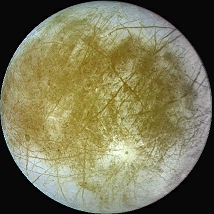Jupiter's moon Europa may be the next destination for a joint American-European voyage. Preliminary inquiries have begun between the two agencies
Avi Blizovsky

The next major collaboration between the European Space Agency and NASA will be for Europa, Jupiter's icy moon.
Joint working groups will soon be established to determine what type of spacecraft will be required and what each side can provide. This is what the BBC website says.
Oceans may exist on Europa and contain micro-organisms under the ice layer. Senior officials in Washington and Paris want to continue following the success of the Cassini Huygens mission to Saturn and the moon Titan. "It was a beautiful wedding and we look forward to repeating it," said Prof. David Southwood from the European Space Agency. "Europe can reach Europe alone, but the cooperation was successful, and this is the natural place for the next cooperation operation," said Prof. Fred Taylor from the University of Oxford.
Many scientists agree that Europa is now the best target for a primary mission. The moon, discovered by Galileo, is slightly smaller than our moon. It is covered with a layer of white and light brown ice and scarred with cracks that are almost certainly the result of stresses caused by the tidal influence of Jupiter's strong gravity.
The researchers hypothesize that the warming that came as a result of the tides may have created huge oceans of water under the ice sheet and that this environment could serve as a home for micro-organisms. The director of the European Space Agency held discussions about Europe with his colleagues from NASA at the end of last week. I managed to intrigue them, he said. The discussions are at a very early stage and the mission, if launched, will not come out before 2016 if this becomes a reality. Nevertheless, Prof. Southwood said that this is a good time to decide how the two agencies can take advantage of the experience they have gained in Saturn.
The US has a plan to reach Europe independently using the Jupiter Icy Moons Orbiter (Jimo), however the ambitious project that may also involve the use of nuclear propulsion systems has been frozen in the meantime due to the focus of the plan on President Bush's initiative to return humans to the moon and bring them to Mars as well. Therefore, the Europeans proposed a common task for Europe to ease the expenses. As with the Cassini-Huygens mission, Suthwood estimates that the new mission will also have a double spacecraft structure. The Europeans have a spacecraft on its way to Jupiter's orbit - Rosetta, which will encounter a comet there and land on its surface in 2014.
